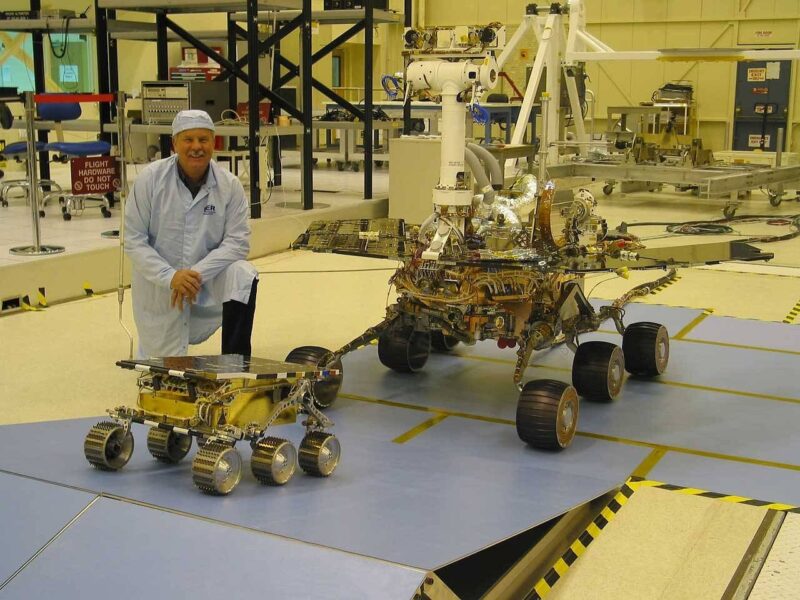When a Typo Led to a Lost Spacecraft – The Mars Climate Orbiter Disaster
November 15, 2024

In 1999, the Mars Climate Orbiter was launched with high hopes of revolutionizing our understanding of the Martian atmosphere. However, just months later, this ambitious mission met an untimely demise due to an avoidable mistake—a single typo that outlined the importance of precision in space exploration.
1. The Mars Climate Orbiter Mission
The Mars Climate Orbiter was designed to study the Martian climate, weather, and atmosphere. By gathering data concerning Martian surface and atmospheric conditions, scientists hoped to gain insights into the planet’s potential for sustaining life. The spacecraft was equipped with a suite of scientific instruments that could analyze temperature, pressure, and dust patterns on the Red Planet, and it would collect crucial data to be returned to Earth for study.
To put things in perspective, the Mars Climate Orbiter was part of NASA’s Mars Exploration Program and was anticipated to play an essential role in future missions to Mars, including potential human exploration. The mission cost an estimated $327.6 million, making success critical not only for scientific progress but also for maintaining public and political trust in NASA’s ambitious projects.
2. The Journey to Mars
The mission launched on December 11, 1998, aboard a Delta II rocket from Cape Canaveral in Florida. After a journey of nearly 10 months through the vastness of space, the Orbiter finally arrived near Martian orbit on September 23, 1999. It was supposed to enter a low orbit around Mars, allowing its instruments to collect crucial data.
Upon arrival, the Martian atmosphere proved to be challenging. The Orbiter was designed to operate in thin Martian air, but the function of its thrusters was paramount in ensuring it successfully entered orbit. Engineers were carefully monitoring telemetry data, expecting to receive signals confirming that the Odyssey team had successfully maneuvered the spacecraft into its intended orbit. However, something went wrong.
3. The Critical Error
The crucial error that led to the failure of the Mars Climate Orbiter stemmed from a simple misunderstanding between two teams involved in the craft’s development. The Orbiter was developed by NASA’s Jet Propulsion Laboratory (JPL) in California, whereas the propulsion system used imperial units (pounds) instead of metric units (newtons)—the standard unit of measurement used by JPL. When the spacecraft’s navigators received the data regarding the thrust force of the spacecraft, it was inadvertently interpreted in the wrong unit system. In particular:
– The spacecraft’s trajectory calculations were based on metric measurements.
– The engineering team that built the spacecraft used imperial measurements without ensuring compatibility.
This discrepancy resulted in the Orbiter descending far too low during its approach to Mars, leading to its disintegration in the Martian atmosphere, ultimately costing NASA an invaluable opportunity to gather large amounts of data from Mars.
4. The Aftermath and Lessons Learned
The loss of the Mars Climate Orbiter was not just a failure for NASA but also a cautionary tale regarding the importance of clear communication and the need for rigorous checks and balances in complex projects. Following the incident, a report was issued outlining the mistakes and miscommunications between the teams involved, highlighting the need for better oversight and standardized protocols, especially when dealing with critical scientific instruments.
NASA took immediate steps to ensure that such errors would not occur again. The organization revised its engineering practices, especially concerning unit conversions, and implemented a more systematic verification process for inter-team communication. Each future mission would require meticulous cross-referencing of specifications to prevent similar errors stemming from inconsistencies.
Additionally, there were significant improvements to NASA’s organizational structures, including protocols for unit standardization and checks that ensure all engineering teams understand and utilize agreed-upon systems.
Ultimately, this mishap paved the way for greater scrutiny over the engineering aspects of future exploratory missions, contributing to the success of other Mars missions that followed, such as the Mars Exploration Rovers and the Mars Science Laboratory.
5. Conclusion: A Typo with Lifelong Implications
The Mars Climate Orbiter disaster serves as a striking reminder that in the high-stakes world of space exploration, precision is not just a technical necessity; it’s a moral imperative. The cost of a small typo—one with far-reaching implications—demonstrates that even the smallest details hold monumental importance when it comes to achieving monumental goals.
While the mission was ultimately deemed a failure, the lessons learned have ensured that subsequent missions have enhanced our understanding of Mars and its potential for life. As we continue to push boundaries and reach for the stars, we must remember the critical importance of accuracy—and that every detail counts.
Understanding our past failures serves as a catalyst for future successes, as we venture into deeper realms of space knowledge, striving earnestly to learn more about our neighboring planet and beyond.






